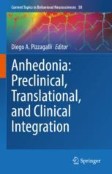Search
Search Results
-
Cerebellar associative learning underlies skilled reach adaptation
The cerebellum is hypothesized to refine movement through online adjustments. We examined how such predictive control may be generated using a mouse...

-
Post-error adjustments occur in both reaching and gras**
Post-error slowing (PES), the tendency to slow down a behavioral response after a previous error, has typically been investigated during simple...

-
Neural and Behavioral Measures of Stress-induced Impairment in Error Awareness and Post-error Adjustment
Exposure to stress negatively affects error processing, but the impact of stress on error awareness remains to be determined. In the present study,...

-
Continuous reach-to-grasp motion recognition based on an extreme learning machine algorithm using sEMG signals
Recognizing user intention in reach-to-grasp motions is a critical challenge in rehabilitation engineering. To address this, a Machine Learning (ML)...

-
Healthy adults favor stable left/right hand choices over performance at an unconstrained reach-to-grasp task
Reach-to-grasp actions are fundamental to the daily activities of human life, but few methods exist to assess individuals’ reaching and gras**...

-
Reach-to-grasp kinematics and kinetics with and without visual feedback in early-stage Alzheimer’s disease
This study aimed to investigate the effects of early-stage Alzheimer’s disease (AD) on the reach-to-grasp kinematics and kinetics with and without...

-
Combined EEG and immersive virtual reality unveil dopaminergic modulation of error monitoring in Parkinson’s Disease
Detecting errors in your own and others’ actions is associated with discrepancies between intended and expected outcomes. The processing of salient...

-
MicroRNAs from edible plants reach the human gastrointestinal tract and may act as potential regulators of gene expression
MicroRNAs (miRNAs) are small single-stranded non-coding RNA molecules that regulate gene expression at the post-transcriptional level. A...

-
Reward prediction error neurons implement an efficient code for reward
We use efficient coding principles borrowed from sensory neuroscience to derive the optimal neural population to encode a reward distribution. We...

-
Synergizing pharmacometrics and pharmacovigilance for medication error management: the case of secukinumab
PurposeTo demonstrate the effective integration of pharmacometrics and pharmacovigilance in managing medication errors, highlighted by a case...

-
A feature-specific prediction error model explains dopaminergic heterogeneity
The hypothesis that midbrain dopamine (DA) neurons broadcast a reward prediction error (RPE) is among the great successes of computational...

-
Bimanual coordination during reach-to-grasp actions is sensitive to task goal with distinctions between left- and right-hemispheric stroke
The perceptual feature of a task such as how a task goal is perceived influences performance and coordination of bimanual actions in neurotypical...

-
Multi-target measurable residual disease assessed by error-corrected sequencing in patients with acute myeloid leukemia: An ALFA study
The evaluation of measurable residual disease (MRD) in acute myeloid leukemia (AML) using comprehensive mutation analysis by next-generation...

-
Impaired reach-to-grasp kinematics in parkinsonian patients relates to dopamine-dependent, subthalamic beta bursts
Excessive beta-band oscillations in the subthalamic nucleus are key neural features of Parkinson’s disease. Yet the distinctive contributions of beta...

-
Neglected malaria parasites in hard-to-reach areas of Odisha, India: implications in elimination programme
BackgroundInformation on the foci of Plasmodium species infections is essential for any country heading towards elimination. Odisha, one of the...

-
Observing errors in a combination of error and correct models favors observational motor learning
BackgroundImitative learning is highly effective from infancy to old age; however, little is known about the effects of observing errors during...

-
Minimal detectable change of gait and balance measures in older neurological patients: estimating the standard error of the measurement from before-after rehabilitation data thanks to the linear mixed-effects models
BackgroundTracking gait and balance impairment in time is paramount in the care of older neurological patients. The Minimal Detectable Change (MDC),...

-
Smoothness metric during reach-to-grasp after stroke: part 2. longitudinal association with motor impairment
BackgroundThe cause of smoothness deficits as a proxy for quality of movement post stroke is currently unclear. Previous simulation analyses showed...

-
Pleasure, Reward Value, Prediction Error and Anhedonia
In order to develop effective treatments for anhedonia we need to understand its underlying neurobiological mechanisms. Anhedonia is conceptually...
-
Neuro-cognitive assessment of intentional control methods for a soft elbow exosuit using error-related potentials
Soft exosuits offer promise to support users in everyday workload tasks by providing assistance. However, acceptance of such systems remains low due...

